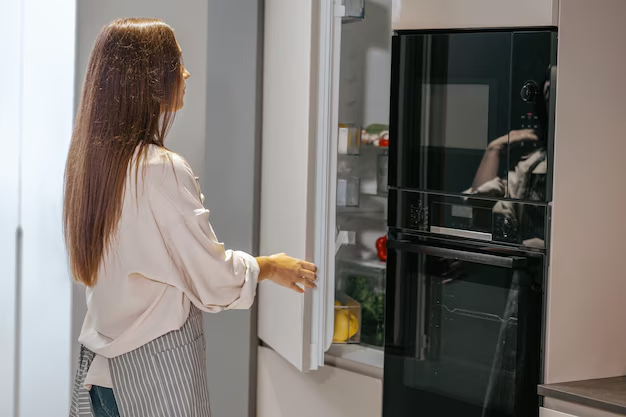Understanding Sealed System Refrigerators: A Comprehensive Guide
Refrigerators are indispensable in modern households, safeguarding our food by maintaining very specific environmental conditions. Among the various types of refrigerators available, the term "sealed system refrigerator" often pops up. But what does it actually mean, and why does it matter to you? Let's dive into the world of sealed system refrigerators to uncover what makes them a preferred option and how they function within the broader ecosystem of refrigeration technology.
🤔 What Exactly Is a Sealed System Refrigerator?
At its core, a sealed system refrigerator is one where the critical components responsible for the cooling process are hermetically sealed. This system typically includes the compressor, condenser, evaporator, and connecting tubing that contains the refrigerant.
Key Components of a Sealed System
- Compressor: Often considered the heart of the refrigeration system, the compressor pumps the refrigerant through the system.
- Condenser: Here, the refrigerant releases heat and condenses from a gas back into a liquid.
- Evaporator: Located inside the fridge compartment, the evaporator is where the refrigerant absorbs heat, causing the temperature to drop.
- Tubing: Connects these components and allows the refrigerant to circulate through the system.
The hermetically sealed nature of these components means they are tightly enclosed and less prone to leaks, offering several advantages over non-sealed systems.
📈 Advantages of Sealed System Refrigerators
Sealed system refrigerators come with a list of notable benefits that distinguish them from other types:
- Efficiency: The tight sealing minimizes the risk of refrigerant leaks, leading to better energy efficiency.
- Lower Maintenance: With fewer chances of leaks, sealed systems generally require less maintenance over time.
- Longevity: These systems are designed for durability, potentially extending the lifespan of your refrigerator.
- Consistency: A sealed system enhances temperature consistency, keeping your food fresher for longer.
🚪 The Role of Doors & Seals in Refrigerator Efficiency
While the sealed system itself is crucial, the efficiency of a refrigerator also significantly depends on the quality of its doors and seals.
The Importance of Door Seals
The seals on the door—often made of flexible rubber—act as a barrier to prevent warm air from entering the refrigerator. Ensuring these seals are intact and not worn out is vital for maintaining efficiency. Worn or damaged seals can cause the refrigerator to work harder, leading to increased energy consumption.
Practical Tips for Maintaining Door Seals:
- Regular Inspection: Frequently check for cracks or wear.
- Cleaning: Keep the seals clean from food spills or debris, which might cause them to break down faster.
- Seal Test: Place a dollar bill in the door; if it slides out easily, your seal might need replacing.
🔧 Troubleshooting Common Sealed System Issues
Despite their advantages, sealed system refrigerators can face issues. Recognizing common problems early can prevent more severe damage.
Common Issues:
- Reduced Cooling: Often due to refrigerant leaks or compressor issues.
- Strange Noises: Might indicate a problem with the compressor motor.
- Frost Build-Up: Can suggest an evaporator or fan issue.
When to Call a Professional:
Given the complexity of sealed systems, professional assessment and repairs are usually required for effective troubleshooting. Attempting DIY repairs can void warranties and may lead to further damage.
🧠 How Sealed Systems Contribute to Environmental Sustainability
With increasing awareness around environmental concerns, more consumers are considering the eco-friendliness of their appliances. Sealed system refrigerators contribute positively in several ways:
- Reduced Energy Consumption: As mentioned, the efficiency of a sealed system means less energy is used to maintain cooling.
- Lower Emissions: With minimized refrigerant leakage, there are fewer greenhouse gas emissions.
- Longer Lifecycle: Durable systems lead to less frequent replacements, reducing electronic waste.
📚 Selection Tips for Consumers
Choosing the right refrigerator for your needs involves understanding additional features and aligning them with your lifestyle.
- Size and Capacity: Choose a refrigerator that fits your kitchen space and accommodates your family's food storage needs.
- Energy Star Ratings: Look for models with high energy ratings to ensure lower utility bills and environmental impact.
- Technology and Features: Consider advanced features like smart connectivity, which allow remote adjustments for more efficiency.
- Budget Considerations: Balance your needs against costs, keeping in mind that investing in a more efficient model can save money in the long run.
📊 Quick Reference: Key Takeaways for Sealed System Refrigerators
Here's a handy list to summarize the essentials of sealed system refrigerators:
- 🔧 Efficiency: Sealed systems minimize leaks and optimize performance.
- 🛡️ Maintenance: Requirements are generally low; professional servicing is recommended for repairs.
- 📉 Eco-Friendliness: They support sustainable habits by using less energy and reducing emissions.
- 📏 Fit and Function: Choose based on size, features, and energy ratings for your best experience.
🗝️ Final Insights
When it comes to keeping your provisions fresh and your household energy-efficient, sealed system refrigerators stand out. By understanding how these systems work, what they offer in terms of benefits, and how to troubleshoot common issues, you are better equipped to make an informed choice.
Sealed system refrigerators epitomize a balance of efficiency and practicality, ensuring a reliable performance designed to last. Their relevance in energy conservation and environmental efficiency also aligns with the growing demand for more sustainable living solutions. Whether you're looking to upgrade an existing appliance or plan a new purchase, considering a sealed system refrigerator may just align with your goals for an economical and eco-friendly future.
